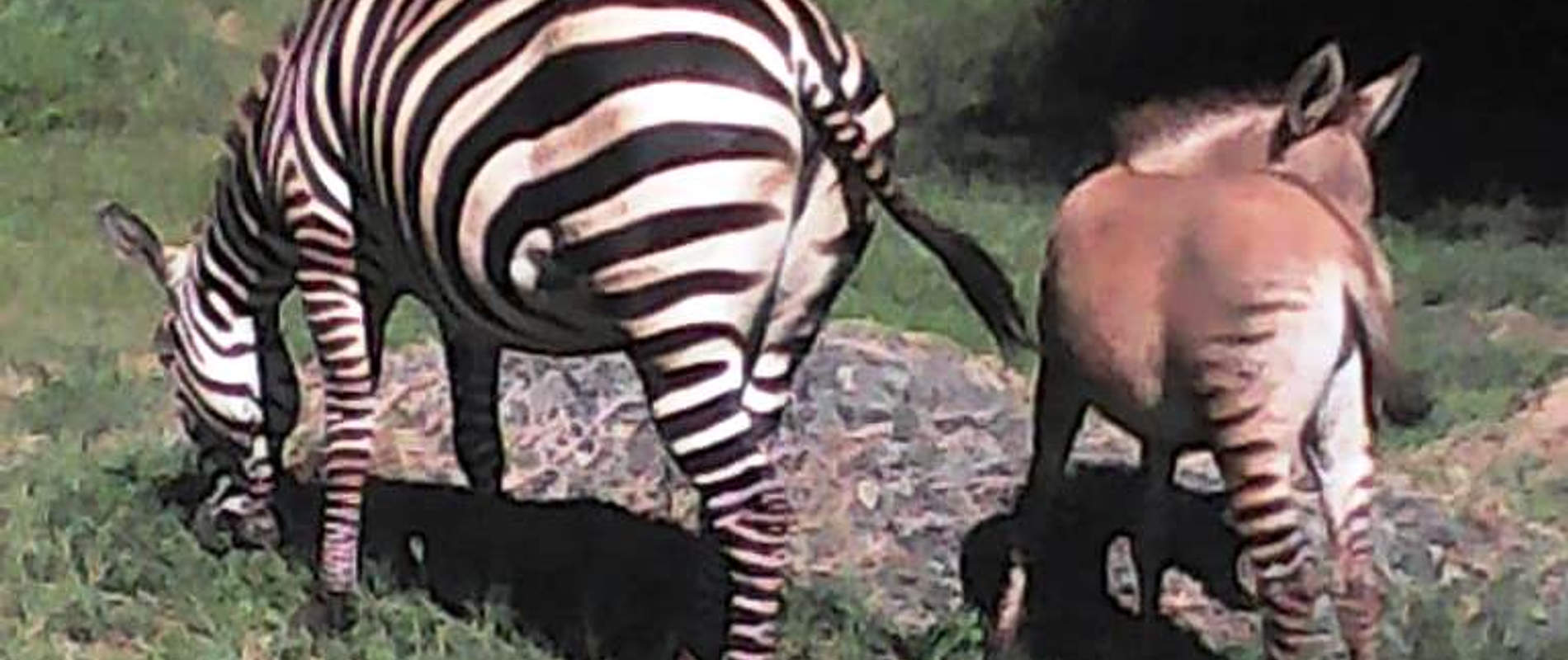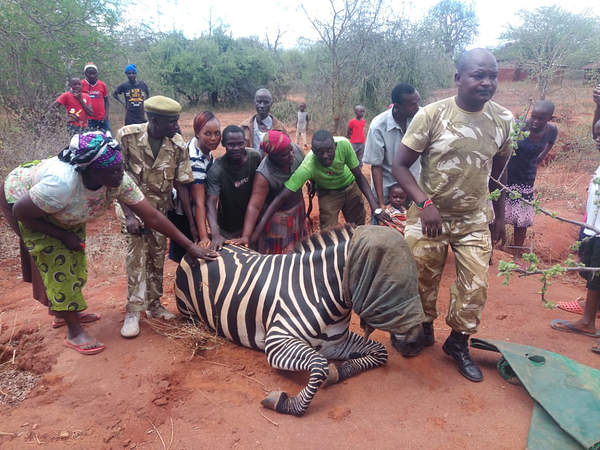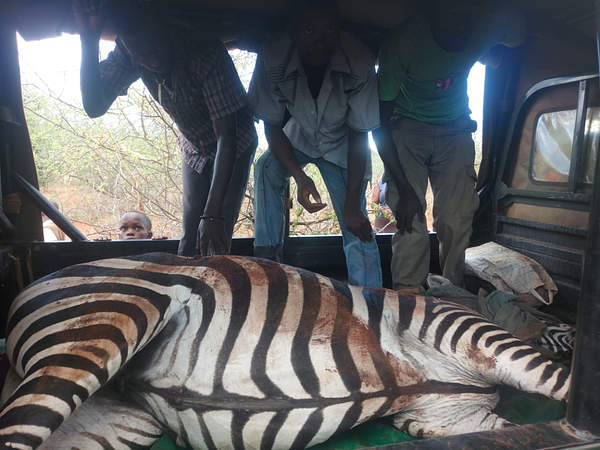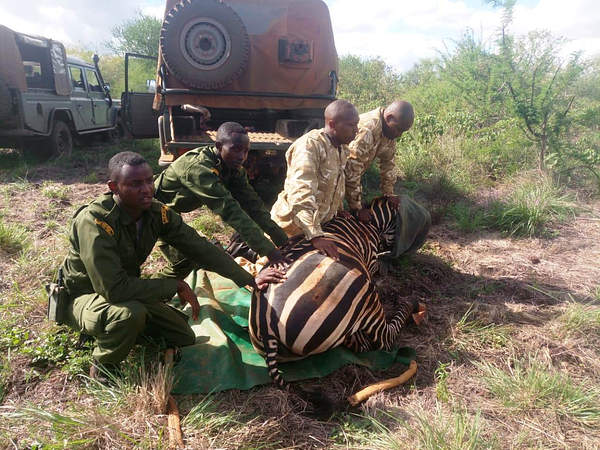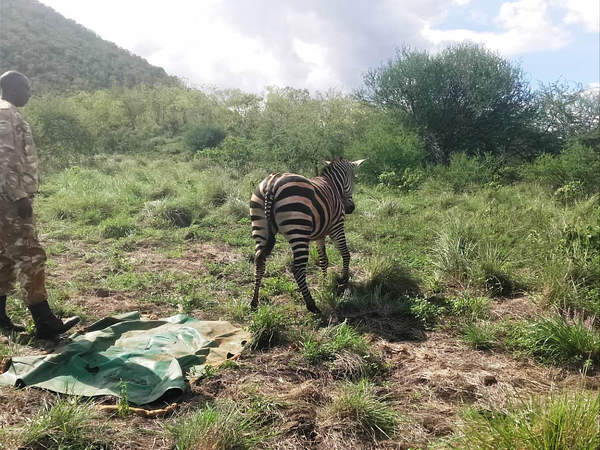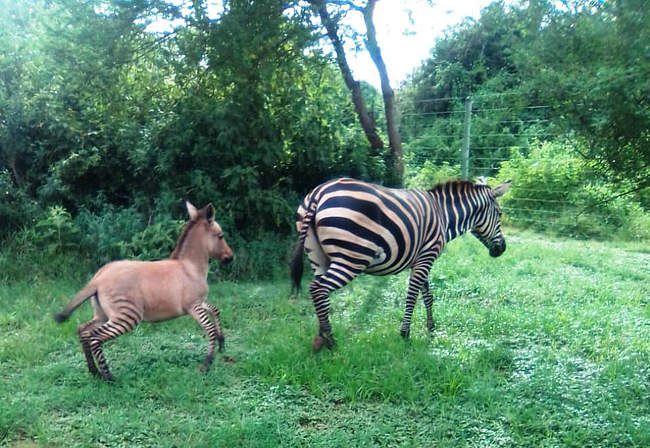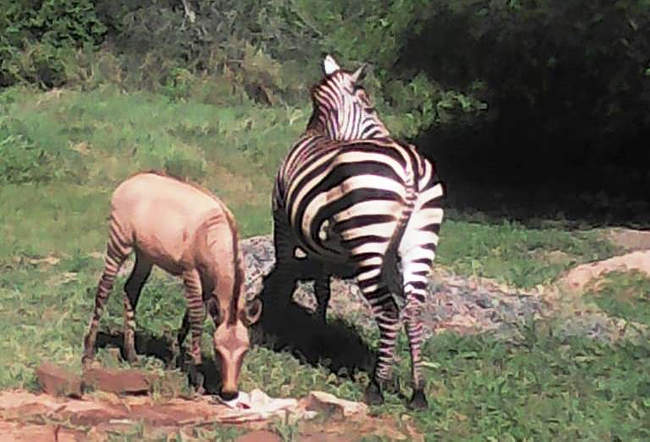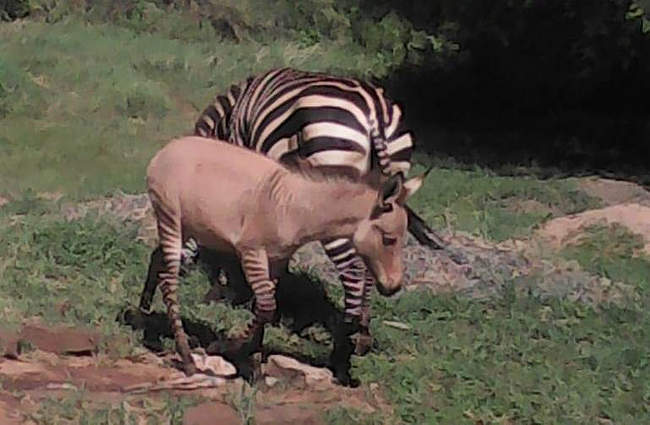Working with wildlife, one learns to expect the unexpected. Even the most seemingly straightforward story can eventually reveal its true stripes and end up surprising us all.
Last May, the SWT/KWS Tsavo Mobile Veterinary Unit received a call from the KWS Community Warden at Mutomo Station. A stray zebra that had ventured out of the Tsavo East National Park and into a community bordering the park. She made herself right at home there, becoming an honorary member of a local woman’s cattle herd. This situation continued for many weeks, until the story was aired on local media, and then our team was asked to help translocate the zebra back to a protected area.

At this point, the zebra had become fairly habituated to community life, so we had to choose her new home with that in mind. We settled on our Kenze Anti-Poaching Team’s base in Chyulu National Park, so they could keep a close eye on her while she settled into her new home. Translocating the mare was a straightforward process; after sedating her, the team put her in the back of a pickup truck and took the most direct route into the National Park. Waking up upon arrival, the zebra — who was quickly proving herself to be unflappable and extremely adaptable — got to her feet and ambled off into the bush. Our Kenze team saw her frequently over the coming weeks and months; she became a regular at the water hole and often availed herself of the nearby salt lick.
Earlier this year, our fence maintenance team caught a glimpse of the zebra with a tiny foal by her side. It wasn’t until several weeks later that we finally got a proper sighting of the pair — and that was when her birth announcement revealed a whole new, surprising twist. While zebra foals are born with white and brown stripes that eventually turn black, this little one’s body was suspiciously light on stripes and overwhelmingly tawny in color. At first, we thought that it had just been wallowing in the mud bath, but then the truth dawned on us: Our wayward zebra had given birth to a zonkey!
A zonkey is a highly unusual hybrid between a zebra and donkey. The gestation period of a zebra is twelve months, so it’s not difficult to connect the dots. During her time living within the community last year, she had obviously become acquainted with an amorous donkey. The zonkey combines the sturdy body of its donkey sire and the striped legs of its zebra mother, which makes for a striking creature. While it should otherwise lead a normal life, zonkeys are mules, meaning that it will be unable to successfully breed once it reaches maturity.
We’re happy to report that mum and baby are thriving. Their new home is in an area that isn’t plagued by heavy predation and thanks to the lush conditions, water and grass plentiful it is a good place to call home. We have over the decades raised many orphaned zebras, and in time, we will add to this unusual pair when it becomes time to release any zebra orphans, while this unusual pair wait for some wild zebra's to discover them both. Until that day comes, they seem quite content to spend their days grazing side-by-side, a sight that makes us all stop and marvel at the wonders of nature.
